
Help! is the fifth studio album by the English rock band the Beatles and the soundtrack to their film of the same name. It was released on 6 August 1965. Seven of the fourteen songs, including the singles "Help!" and "Ticket to Ride", appeared in the film and take up the first side of the vinyl album. The second side includes "Yesterday", the most-covered song ever written. The album was met with favourable critical reviews and topped the Australian, German, British and American charts.

Monaural or monophonic sound reproduction is sound intended to be heard as if it were emanating from one position. This contrasts with stereophonic sound or stereo, which uses two separate audio channels to reproduce sound from two microphones on the right and left side, which is reproduced with two separate loudspeakers to give a sense of the direction of sound sources. In mono, only one loudspeaker is necessary, but, when played through multiple loudspeakers or headphones, identical signals are fed to each speaker, resulting in the perception of one-channel sound "imaging" in one sonic space between the speakers. Monaural recordings, like stereo ones, typically use multiple microphones fed into multiple channels on a recording console, but each channel is "panned" to the center. In the final stage, the various center-panned signal paths are usually mixed down to two identical tracks, which, because they are identical, are perceived upon playback as representing a single unified signal at a single place in the soundstage. In some cases, multitrack sources are mixed to a one-track tape, thus becoming one signal. In the mastering stage, particularly in the days of mono records, the one- or two-track mono master tape was then transferred to a one-track lathe used to produce a master disc intended to be used in the pressing of a monophonic record. Today, however, monaural recordings are usually mastered to be played on stereo and multi-track formats, yet retain their center-panned mono soundstage characteristics.

1962–1966, also known as the Red Album, is a compilation album of hit songs by the English rock band the Beatles, spanning the years indicated in the title. Released with its counterpart 1967–1970 in 1973, the double LP peaked at number 3 in the United Kingdom. In the United States, it topped the Cash Box albums chart and peaked at number 3 on the Billboard Top LPs & Tape chart while 1967–1970 reached the top spot. The album was re-released in September 1993 on compact disc, charting at number 3 in the UK.
Automatic double-tracking or artificial double-tracking (ADT) is an analogue recording technique designed to enhance the sound of voices or instruments during the mixing process. It uses tape delay to create a delayed copy of an audio signal which is then played back at slightly varying speed controlled by an oscillator and combined with the original. The effect is intended to simulate the sound of the natural doubling of voices or instruments achieved by double tracking. The technique was developed in 1966 by engineers at Abbey Road Studios in London at the request of the Beatles.

Meet the Beatles! is a studio album by the English rock band the Beatles, released as their second album in the United States. It was the group's first American album to be issued by Capitol Records, on 20 January 1964 in both mono and stereo formats. It topped the popular album chart on 15 February 1964 and remained at number one for eleven weeks before being replaced by The Beatles' Second Album. The cover featured Robert Freeman's iconic portrait of the Beatles used in the United Kingdom for With the Beatles, with a blue tint added to the original stark black-and-white photograph.
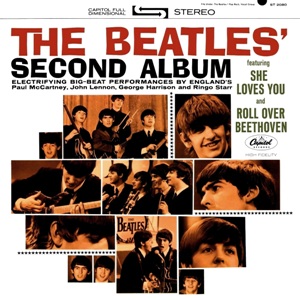
The Beatles' Second Album is the second Capitol Records album by the English rock band the Beatles, and their third album released in the United States including Introducing... The Beatles, which was issued three months earlier by Vee-Jay Records. Following its release in April 1964, The Beatles' Second Album replaced Meet the Beatles! at number 1 on the Billboard Top LPs chart in the US. The album was compiled mostly from leftover tracks from the UK album With the Beatles and Long Tall Sally EP, which are predominantly rock and roll and R&B covers, and rounded out with several Lennon-McCartney-penned non-album b-sides and the hit single "She Loves You". Among critics, it is considered the band's purest rock and roll album and praised for its soulful takes on both contemporary black music hits and original material.

Something New is an album by English rock band the Beatles, released in 1964 for the North American market only.

The Early Beatles is the Beatles' sixth album released on Capitol Records, and their eighth album overall for the American market. All of the tracks on this album had previously been available on the Vee-Jay Records release Introducing... The Beatles, issued in January, 1964. The front cover photo for this album features the same back cover photo for the British LP Beatles for Sale.

The Beatles' Long Tall Sally is an album by the English rock band the Beatles, their final album to be released exclusively in Canada. It was a mono release on the Capitol Records label in May 1964.

Monk's Music is a jazz album by the Thelonious Monk Septet, which for this recording included Coleman Hawkins and John Coltrane. It was recorded in New York City on June 26, 1957, and released in November the same year.
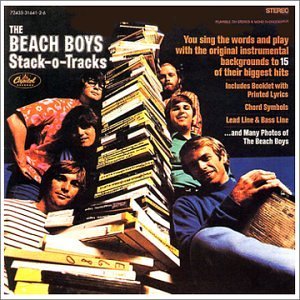
Stack-o-Tracks is an instrumental album release by the Beach Boys containing backing tracks to fifteen of their songs spanning their career to that point. As it was issued during one of their lowest commercial ebbs in the U.S., Stack-o-Tracks became the first Beach Boys album to fail to reach the US or UK charts. Until 1992's Summer in Paradise, it would remain their only official release to have this distinction.
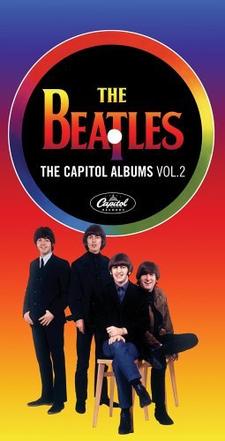
The Capitol Albums, Volume 2 is a box set compilation composed of the Beatles' 1965 American Capitol Records releases. The set, which contains stereo and mono versions of all 92 tracks, was announced on 22 March 2006.

The Haeco-CSG or Holzer Audio Engineering-Compatible Stereo Generator system was an electronic analog audio signal processing device developed by Howard Holzer, Chief Engineer at A&M Records in Hollywood, California.

Yellow Submarine Songtrack is a compilation/soundtrack album by the English rock band the Beatles, released in 1999 to coincide with a re-release of the 1968 animated film Yellow Submarine that same year. The film was re-released on 13 September 1999 in the United Kingdom and the following day in the United States. In contrast with other Beatles remasters available, the songs were fully remixed by Peter Cobbin at Abbey Road Studios from the original multitrack tapes, something not done for the original CD release of the Beatles catalogue in the late 1980s, nor the 2009 remastered albums.

The Beatles in Mono is a boxed set compilation comprising the remastered monaural recordings by the Beatles. The set was released on compact disc on 9 September 2009, the same day the remastered stereo recordings and companion The Beatles were also released, along with The Beatles: Rock Band video game. The remastering project for both mono and stereo versions was led by EMI senior studio engineers Allan Rouse and Guy Massey.

The Beatles (The Original Studio Recordings), also known as The Beatles: Stereo Box Set, is a box set compilation comprising all remastered recordings by English rock band the Beatles. The set was issued on 9 September 2009, along with the remastered mono recordings and companion The Beatles in Mono and The Beatles: Rock Band video game. The remastering project for both mono and stereo versions was led by EMI senior studio engineers Allan Rouse and Guy Massey. The Stereo Box also features a DVD which contains all the short films that are on the CDs in QuickTime format. The release date of 09/09/09 is related to the significance to John Lennon of the number nine.
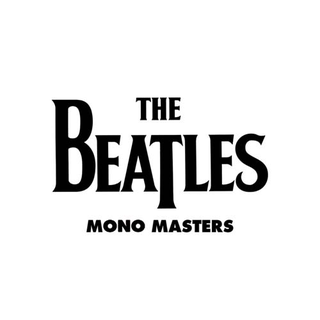
Mono Masters is a compilation album by the Beatles, and is an alternate, all-mono version of the album Past Masters. Mono Masters was originally a two-CD set included as part of The Beatles in Mono box set. The premise of this box set was to compile only Beatles material which was released or prepared for release with a dedicated mono mix. As a result, the track listing for Mono Masters differs from Past Masters on the second half of disc two, omitting some later songs that never had a mono mix, and adding several songs released on stereo-only albums that had unreleased mono mixes. Tracks 9–12 and 15 of disc two were prepared in March 1969 for release as a 7" mono Yellow Submarine EP, two months after the release of the similarly titled soundtrack album, but the project was scrapped, although the EP was mastered. Subsequently, the tracks were only released in stereo, while the true mono mixes remained unreleased. "Get Back" was the final Beatles single mixed for mono format. It was released in the UK in mono, though the US release was in stereo. Thus, the songs that were originally released on stereo singles in the UK are omitted on this release.
Rarities is the name of two separate and unrelated compilation albums by the English rock band the Beatles. The first was released in the United Kingdom in December 1978, while the second album was issued in the United States in March 1980.

The U.S. Albums is a box set compilation comprising the remastered American albums released by the Beatles between 1964 and 1970. The box set was released on 21 January 2014 in the United States, marking the fiftieth anniversary of the Beatles' first trip to the US and first American album from Capitol Records, Meet the Beatles!
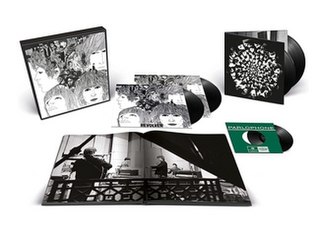
Revolver: Special Edition is an expanded reissue of the 1966 album Revolver by the English rock band the Beatles. It was released on 28 October 2022, and includes a new stereo remix of the album by Giles Martin, with the help of de-mixing technology developed by Peter Jackson's WingNut Films, as well as the original mono mix, session recordings, demos, and an EP including new mixes of the non-album single "Paperback Writer" and its B-side, "Rain", recorded during the Revolver sessions.
















